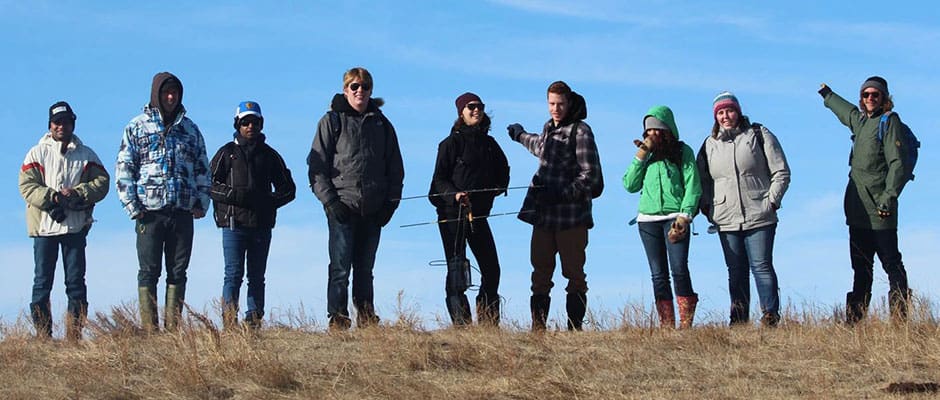Share this article
Canadian Section Meeting Sparks Discussion, Networking
The Canadian Section of The Wildlife Society (CSTWS) hosted its annual conference in Saskatoon, Saskatchewan for the first time from March 13th through 15th, 2015. The conference was regarded as a huge success, drawing attendance from students, professors, government officials, and other NGO groups from Saskatchewan and the rest of Canada. Aside from grabbing the attention of the wildlife community within Saskatchewan, the event also helped spark discussion surrounding the future of wildlife research, management and policy in the province of Saskatchewan.
The Saskatchewan Chapter of The Wildlife Society (SCTWS) took a big role in helping organize the Canadian Section conference, which the chapter considered a great opportunity to bring wildlife discussion to the forefront in Saskatchewan.
To promote TWS and the wildlife profession in Saskatchewan, the SCTWS organized a TWS student conclave for the first time. The conclave surpassed all attendance expectations, with over 40 student participants and a large contingent of wildlife professionals. The day was designed to provide students a chance to engage in practical wildlife techniques and network with wildlife professionals from Saskatchewan and the rest of Canada.
Students received a hands-on opportunity to learn the basics of animal tracking using GPS/VHF telemetry and didn’t have to go far to find targeted GPS collared moose. How many places in the world can you take a quick trip outside of the city and see moose? Welcome to Saskatchewan!
Image Credit: SCTWS
Following the field trip, students had a chance to participate in a Resource Selection Function Workshop with current CSTWS President, Dr. Mark Boyce. The conclave finished off with a student-professional mixer and the 4th Annual Canadian Quiz Bowl. With the help of some choice Saskatchewan beverages, the evening was a blast and a great way for all to network with other wildlife enthusiasts. Despite the top student quiz bowl team narrowly losing to an all-star team of wildlife professionals (including Rick Baydack, Art Rodgers, Marcus Freemen, and Doug Heard), the evening was kept light-hearted and filled with fun.
The CSTWS conference officially began Saturday, March 14th, and consisted of two full days of paper presentations, a poster session, banquet and awards, and a business meeting. The conference brought out the best from many wildlife professionals and students alike, making the decision for best paper and poster particularly difficult. The banquet was highlighted by several gratifying moments for TWS, including: the presentation of the first annual Ian McTaggart-Cowan award to long-time TWS member and British Columbia Biologist Doug Heard, and the presentation of a $1,000 grant to the Saskatchewan Chapter of The Wildlife Society from the Saskatchewan Wildlife Federation. The conference concluded with a “changing of the guard” with now CSTWS Past-President Darren Sleep passing the gavel on to now current President Mark Boyce.
Although the conference was a weekend full of enjoyment, perhaps the most important part of the event came during the “Future of Fish & Wildlife Research in Saskatchewan” meeting held by the SCTWS following the conference. The meeting was intended to bring together wildlife stakeholder groups in the province such as members from Government, University and NGO’s (SCTWS, Saskatchewan Wildlife Federation) to discuss the future of wildlife research and management in the province of Saskatchewan. After a lengthy round-table discussion, the meeting resulted in the creation of a committee dedicated towards furthering the integration of wildlife research with management and policy in the province.
From engaging students about the wildlife profession to sparking real changes in the future of wildlife management in the province, the first Saskatchewan-hosted conclave and CSTWS conference truly captured the mission and spirit of TWS.
For more information on the Canadian Section of TWS and the SCTWS please visit their websites here and here.
Header Image:
A student group learns to use VHF telemetry to track prairie moose in Saskatchewan.
Image Credit: SCTWS









